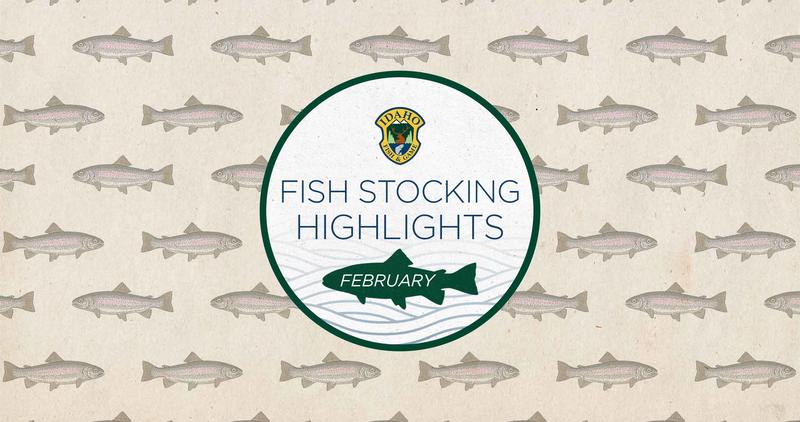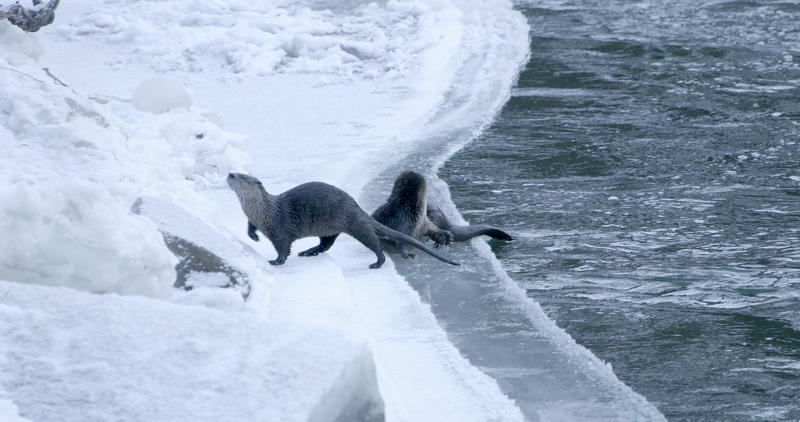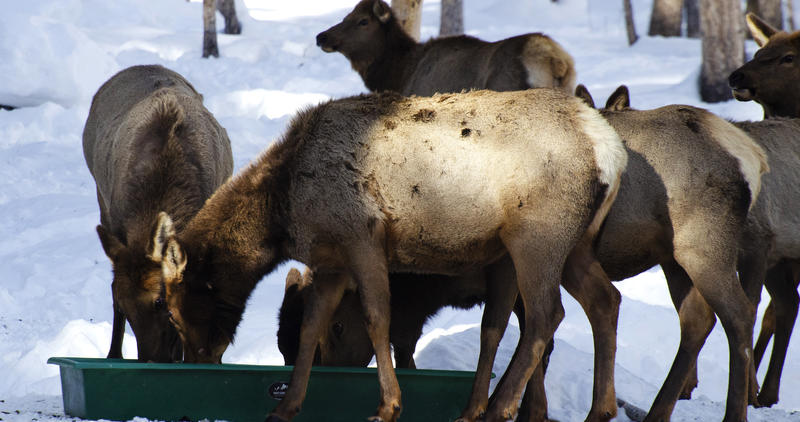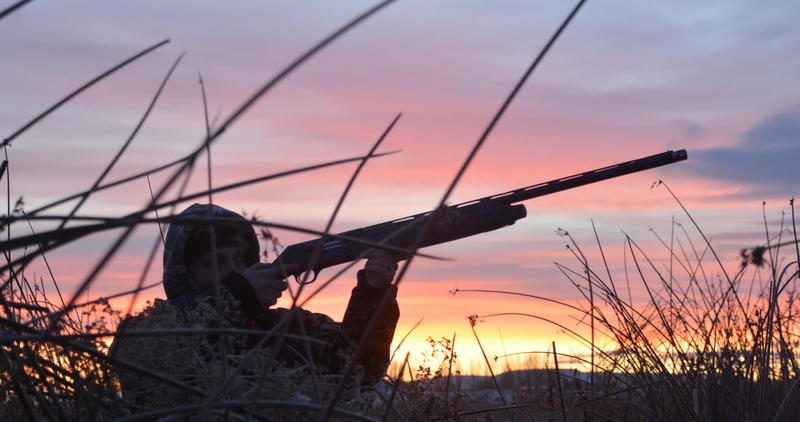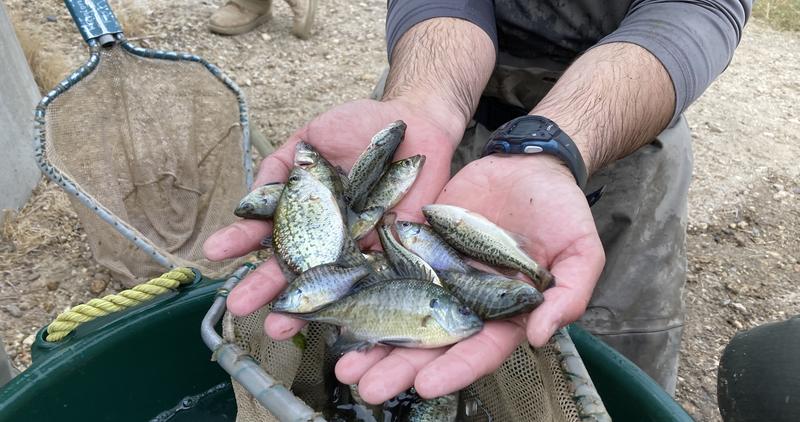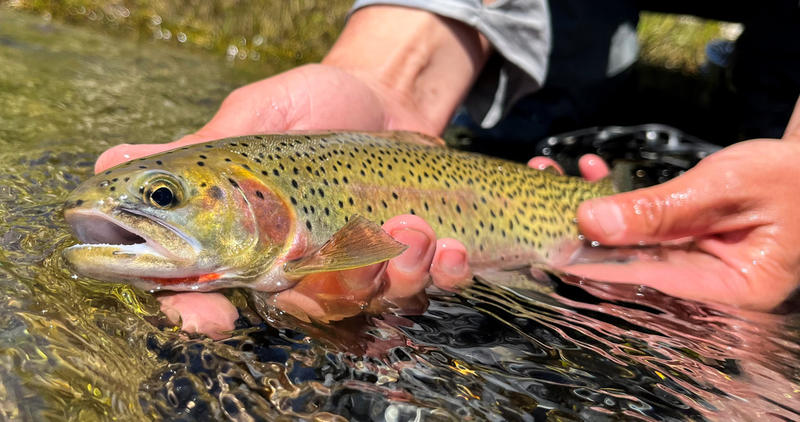NOTICE OF PUBLIC CLOSURE
Oxbow Fish Hatchery is closed to the public while the hatchery’s water intake system is being upgraded. Pending approval from federal regulators, an extensive remodel and expansion of the hatchery itself will begin in late summer 2022, extending the facility’s closure through summer 2024.
Oxbow Fish Hatchery is located in Baker County, Oregon, at the confluence of Pine Creek and the Snake River near the Hells Canyon National Recreation Area. It is situated at the eastern end of Oregon State Highway 86 near the Idaho Power village known as Oxbow. The hatchery is approximately 70 highway miles east of Baker City, Ore., and approximately 150 highway miles northwest of Boise, Idaho.
Oxbow Fish Hatchery is owned and financed by Idaho Power Company, and operated and staffed by the Idaho Department of Fish and Game.
Related Location
55120 Hatchery Drive
Oxbow, OR 97840
United States
Oxbow Fish Hatchery serves as a trapping and spawning facility for steelhead broodstock, a trapping facility for spring Chinook salmon (for Rapid River Fish Hatchery production) and a rearing facility for fall Chinook salmon. Adult salmon and steelhead are collected at a trap 23 miles downstream from the hatchery at the base of Hells Canyon Dam on the Oregon side of the river.
The hatchery was built in 1961 and was the first hatchery constructed by Idaho Power as part of its mitigation program. Over the course of its history, Oxbow Fish Hatchery has served a variety of functions. Originally, it was used to evaluate the feasibility of rearing Snake River fall Chinook salmon in a hatchery environment and releasing them back to the river to supplement the natural Chinook population. In 1964, Oxbow Fish Hatchery assisted in capturing spring Chinook salmon from the Snake River and transporting them to the newly constructed Rapid River Hatchery for spawning. In 1965, the hatchery was modified to accommodate spawning of both fall Chinook salmon and steelhead broodstock. This expanded Oxbow Fish Hatchery’s role to include the distribution of steelhead eggs to Idaho Power’s Niagara Springs Fish Hatchery.
Water Supply - Adult Operation Water Source
Water for adult hatchery operations is pumped from the Snake River. A pumping platform adjacent to the hatchery holds two 100-horsepower production pumps, each producing 17 cubic feet per second. Only one pump operates at a time. Water from the production pumps passes over two aeration pump platforms, one on the south end of the adult ponds and one on the north end of the adult ponds. The water then enters the four adult holding ponds. Water temperatures range from a winter low of 34° F to a late summer high of 72° F.
Water Supply - Incubation Water Source
Two wells provide the water for egg incubation. One well serves as a primary water source, while the other is an emergency backup with a separate power source. The primary well water is a constant 52° F, while the backup is a constant 56° F. Well number 1 has a 3 hp pump and produces 120 gpm. Well #2 has a 10 hp. pump in order to provide additional water to the incubation room which requires 125 gpm. The additional amount of water (approx. 330 gal/min) would be available for the salmon raceway. Water used for incubation is chilled to approximately 43° F prior to entering an elevated surge tank in the hatchery building. Chilled water is distributed through two 4-inch PVC water lines to the 24 incubator stacks.
Oxbow Hatchery was constructed in 1962 by Idaho Power Company and is operated by the Idaho Department of Fish and Game. All funding for this project is provided by Idaho Power as part of its operating license for Brownlee, Oxbow, and Hells Canyon dams on the Snake River. The Federal Energy Regulatory Commission requires Idaho Power to operate this facility to conserve fish runs that were impacted by the construction of the three dam complex. These dams were built without fish passage facilities with the idea that salmon and steelhead would be trapped and trucked around the dams. When this program failed, Idaho Power provided funds to build Oxbow Fish Hatchery.
The three primary objectives of Oxbow Fish Hatchery are:
- To trap and spawn enough returning adult steelhead to provide 1.3 million eyed eggs. Eggs are transported to Niagara Springs Hatchery and ultimately produce 400,000 pounds of steelhead trout smolts annually.
- To trap sufficient numbers of spring chinook adults to produce 1 million smolts annually.
- To produce and raise 1 million fall chinook smolts annually for release below Hells Canyon Dam.
Steelhead Trout
Oxbow Fish Hatchery traps and spawns enough adult steelhead to provide Idaho Power’s Niagara Springs Fish Hatchery near Wendell, Idaho, with approximately one million eggs annually. A majority of the steelhead broodstock are trapped in late October and November. These fish are kept in holding ponds at the hatchery over the winter to await spawning the following spring. Another small portion of broodstock is usually collected each spring if river conditions are conducive to operation of the trap. This ensures that fish are collected and spawned from all portions of the run. Steelhead that are trapped but not needed as broodstock are released into sport fisheries or distributed to Native American tribes for ceremonial and subsistence purposes. The number of fish trapped in excess of broodstock needs can be as high as 3,000.
Spawning begins in mid-March and concludes by early May. Approximately 600 fish (male and female) are spawned as broodstock with each female producing around 5,000 eggs. Eggs are incubated at the hatchery until early May and then transferred to Niagara Springs Fish Hatchery. In March of the following year, fish have reached smolt size (approximately 8 inches) and are hauled in tankers to the Snake River where they are released below Hells Canyon Dam to begin their 570-mile migration to the Pacific Ocean.
Spring Chinook Salmon
Hatchery staff operate the trap at Hells Canyon Dam from May through mid-July to collect spring Chinook salmon adults for use as broodstock at Rapid River Fish Hatchery. Their goal is to trap approximately 400 adult salmon to produce one million smolts annually. When spawning begins at Rapid River Fish Hatchery in August, a portion of the eggs collected there are transferred to Oxbow Fish Hatchery for initial incubation. These eggs are incubated for about one month and then shipped back to Rapid River Fish Hatchery to complete incubation and rearing.
Fall Chinook Salmon
In 2000, Idaho Power added raceways to rear up to 200,000 fall Chinook salmon for release into the Snake River below Hells Canyon Dam. Eyed eggs are received in December from Lyons Ferry Fish Hatchery in Washington, and fish are released the following May. Since this program started, fall Chinook salmon production in the Snake River basin has increased, giving Idaho Power the ability to release more fish for their mitigation program. To accomplish this, Idaho Power funds the production of an additional 800,000 fall Chinook salmon at an Oregon Department of Fish and Wildlife hatchery in Oregon. Each year a combined total of up to one million juvenile fall Chinook salmon are released into the Snake River below Hells Canyon Dam.
Closed. More information at https://idfg.idaho.gov/press/idaho-powers-oxbow-fish-hatchery-closed-vi…


